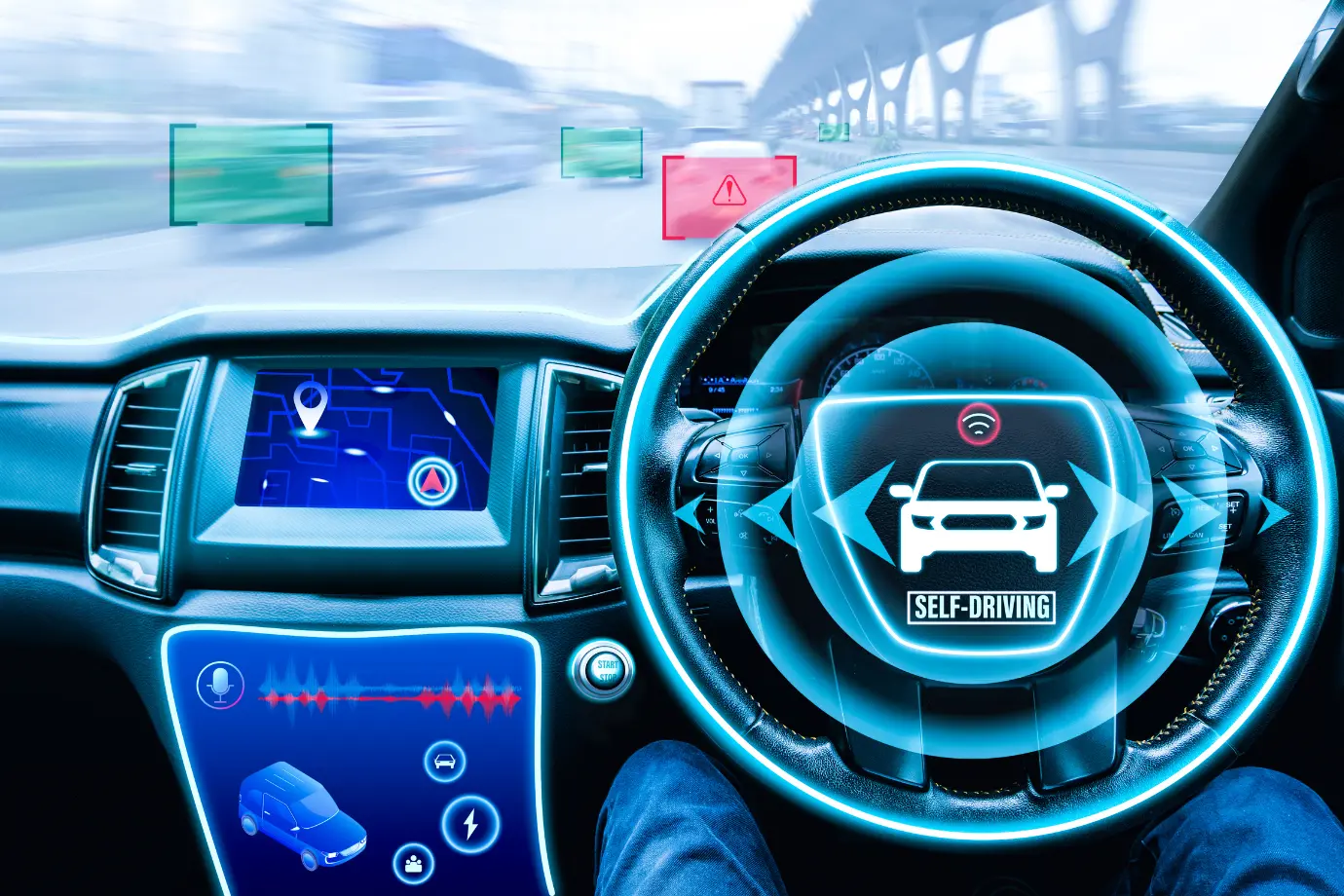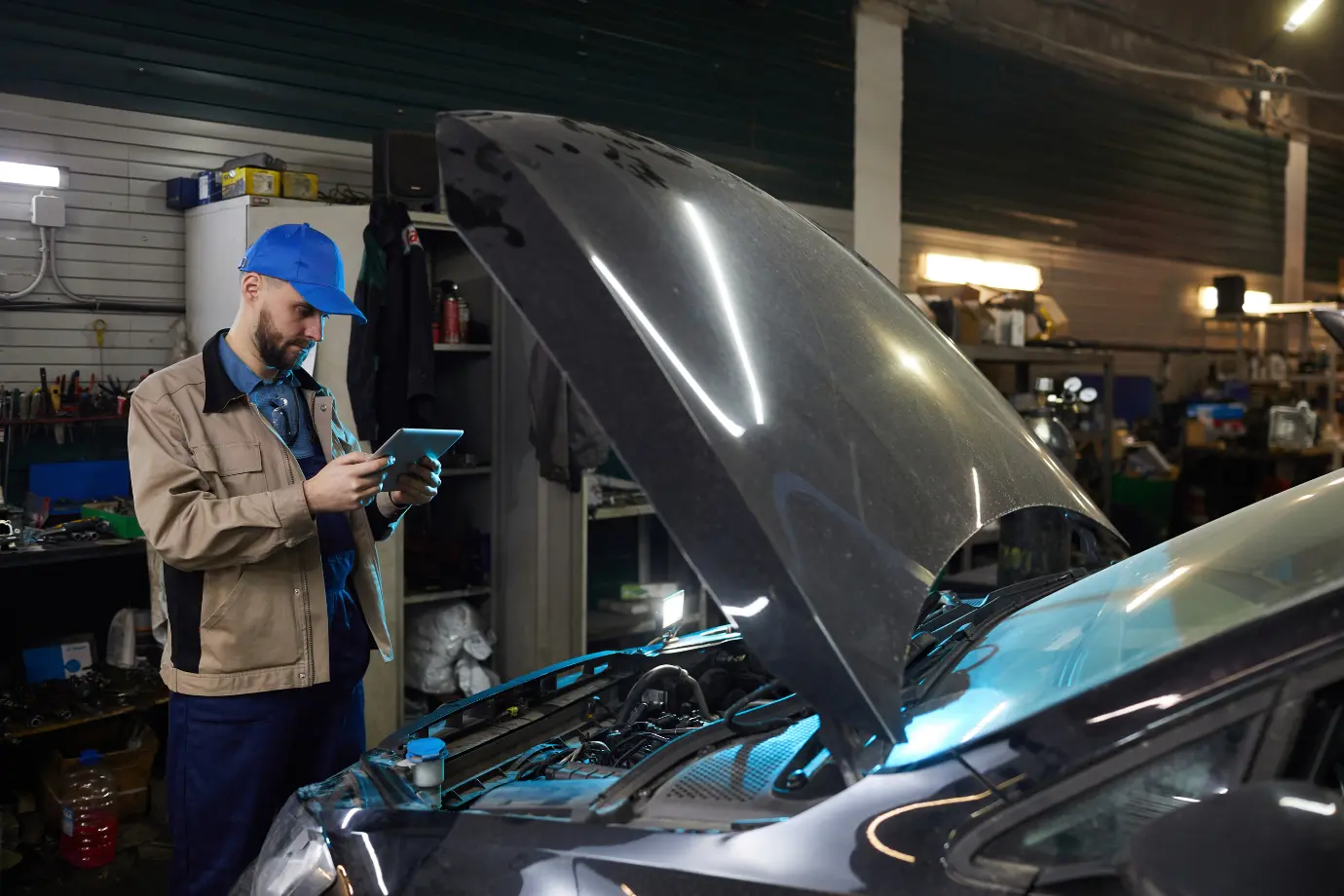
The rise of software-defined vehicles is playing a pivotal role in determining the functioning of modern cars, continuously changing through software updates long after the sale. The OEMs have already changed their approach from hardware-centric to a software-first one and have begun to monetize code and OTA updates, delivering functionalities.
However, this transformation is accompanied by the challenge: how can one assure performance, reliability, and safety when the major part of the vehicle's functionality resides in the software?
This blog examines the impact of software-defined vehicles on OEMs' warranty operations. It also showcases the transition to warranty models of the connected SDV era that are data-driven, predictive, and software-centric.
Defining Software-Defined Vehicles

Consider modern vehicles evolving to be more like mobile phones: devices that get the updates, new characteristics, security fixes, and the like, and also the better performance long after the buying.
What makes a vehicle truly “software-defined”? Key characteristics include:
- Centralized computing platforms are substituting hundreds of individual ECUs (Electronic Control Units).
- OTA (over-the-air) updates provide delivery of new features, bug fixes or even performance enhancements after the customer has taken possession.
- Sensing, telematics, and connectivity throughout the vehicle operation are constantly creating data.
In a software-defined vehicle, the software stack is at the core of the system instead of being peripheral. The line separating automotive engineering from software engineering gets fainter, and software reliability becomes equal to hardware durability.
In that case, the software defect could lead to a performance drop, feature disablement, or even a safety risk, not the faulty part. Such a turnaround affects our perceptions concerning reliability, maintenance, and warranty.
The Traditional Warranty Model: Where It Falls Short

Historically, warranty coverage was limited to mechanical or electrical parts such as engines, transmissions, spare parts, sensors, and wiring harnesses. The original equipment manufacturers (OEMs) defined the limits of the warranty (for example, 3 years / 36,000 miles) and handled the replacement or repair.
But with software-defined vehicles (SDVs):
- The vehicle's hardware may be working perfectly, but it might be out of action due to software bugs, failed over-the-air (OTA) updates, or corrupted code.
- The traditional warranty contracts hardly ever consider such intangible failures as software crashes, version mismatches, or non-performance.
- The question of who is responsible is often the cause of disputes: the OEM, the software provider, or even the cloud provider.
The software bugs or wrong updates can cause the whole fleet of aircraft not to fly, which in turn will lead to big claims or recalls. OEMs might end up in a position where they have to deal with huge financial risk if the warranty provisions remain the same and do not include the software risk.
Without a doubt, the previous warranty model concentrating on parts and labor is not able to meet the requirements of SDVs any longer. A new warranty architecture is needed.
How SDVs Transform Warranty Expectations

The transition of vehicles to software-defined architectures has resulted in a corresponding change in warranty expectations. A number of new dynamics are coming into play:
- Warranty Coverage: The warranty coverage has now expanded to include the whole range of issues related to software, including malware, security, and performance degradation over time.
- Endless Updates: Compatibility, bug fixing, and version support, which were once product guarantees, will now be active throughout the entire life of the vehicle since its functionality is through OTA updates, which means the vehicle gets updates all the time.
- Customer Expectations are Higher: Where smartphones are concerned, consumers expect the same digital performance in vehicles to be free of bugs and very responsive.
- Accountability by Data: Vehicles equipped with the Internet of Things (IoT) will generate logs, telemetry, and diagnostic traces. OEMs must use this data for warranty claim approvals, rather than relying on manual reports or guesses.
These shifts push OEMs to think of warranty not just as reactive protection, but as an evolving assurance in a software ecosystem.
Emerging Challenges in SDV Warranty Management

The adoption of a warranty model for SDVs comes along with a set of complex challenges:
- Cybersecurity Risks: In case hackers exploit vulnerabilities or cause software failures, customers might demand the warranty to cover the repairs. This leads to increased legal exposure and accountability.
- Difficult Supplier Ecosystem: Today's software stacks usually consist of various vendors, OS providers, middleware, and cloud services. It is quite a challenge to sort out who is responsible among all that.
- Data Ownership Questions: Who owns the vehicle's telemetry, logs, or diagnostic records, and who has access to them: OEM, dealer, or customer? These are necessary for warranty claims.
- Regulatory Pressure: The more dependence of vehicles' software on the regulators, the more they might make it necessary for manufacturers to give warranty coverage for safety software (like ADAS, autonomous modules) or even require them to standardize reporting.
- Rising Warranty Costs: Software-related complexity and issues might result in the escalation of warranty reserves to a huge amount if not managed properly through the application of intelligent analytics and risk monitoring.
Role of Data and Warranty Intelligence in SDVs

In order to handle the difficulties of SDV warranties, warranty intelligence that is backed by connected data is a must. An AI-powered warranty solution like Intelli Warranty can provide the following assistance:
- AI/ML for Anomaly Detection: The machine learning models detect the anomalies in code behavior, sensor fusion, and software update performance by firstly monitoring the operations of the vehicle and then spotting these cases even before claims pop up.
- Root Cause Analysis from Telematics & OTA Logs: Warranty systems can be able to identify the problem down to the very specific software or hardware reason, thereby reducing the time and cost for diagnostics, when they are allowed to look at the telemetry, update logs, and error traces.
- Predictive Analytics for Failures: The system foresees failure for modules or components (like battery software, control units) on the basis of both historical and current data, thus empowering preventive action and not letting warranty claims occur.
- Supplier Recovery in Hybrid Ecosystems: In the midst of complex OEM-supplier models, warranty systems can be initiated to recover warranty costs from the responsible supplier based on agreed-upon logical reasoning, thus safeguarding OEM's profit margins.
- Strategic Warranty Intelligence: Intelli Warranty transfigures warranty into a proactively function, providing visibility, predictive capability, and recovery workflows to cope with software complexity and control costs.
Benefits for OEMs: From Cost Burden to Strategic Advantage

If properly developed, the warranty of SDVs would be a major selling point rather than a liability. Among these are the main opportunities:
- Lower Warranty Claims and Costs: By using real-time analytics and predictive monitoring, OEMs can detect potential issues early, reduce repeat failures, and minimize claim volumes, ultimately reducing warranty costs and operational expenses.
- Faster Claim Resolutions: Automation based on data cuts down the claim cycles, which means the costs are lower and the customer satisfaction is higher.
- Customer Retention: Warranty support that is very strong and clear wins customers for updates and reliability of features over the years.
- Revenue Growth: An OEM's premium extended warranty or software features (e.g., advanced ADAS, infotainment) subscription plans can be a source of revenue.
- Brand Reputation: A good software warranty is a must in a competitive market, and it is a sign that the OEM stands behind its code.
Conclusion: Building Trust in the Age of SDVs
The transition to software-defined vehicles induces a radical change in the approach to warranty. Traditional warranty models that assess only parts and labor will not be able to keep up with the new technology demands.
However, automotive manufacturers (OEMs) shall adopt data, analytics, as well as automated warranty systems. Intelli Warranty and similar platforms arm the OEMs with the capabilities to not only manage claims but also to trace the root causes of the problems, recover the incurred costs, and offer an adaptable response as the software changes.
In the end, trust is the only thing that matters in the era of SDVs: trust in the update, trust in the warranty, and trust in the OEM. The confidence of those brands that are already investing in the modern warranty architectures will dominate the future of mobility.
Ready to modernize your warranty operations? Get a free demo and see how Intelli Warranty can transform your warranty management into a smart, scalable, data-driven engine.
Explore More Insights
About the Author
Chandra Shekhar
Chandra Shekhar is the Senior Manager, Strategy & Business Development at Intellinet Systems. With over a decade of experience in the automotive industry, Chandra Shekhar has led digital transformation and aftersales strategy initiatives for OEMs across multiple markets. His background combines deep industry knowledge with a practical understanding of how technology can solve real operational challenges. He focuses on making complex ideas clear and relevant for automotive and aftermarket professionals navigating ongoing change.



























